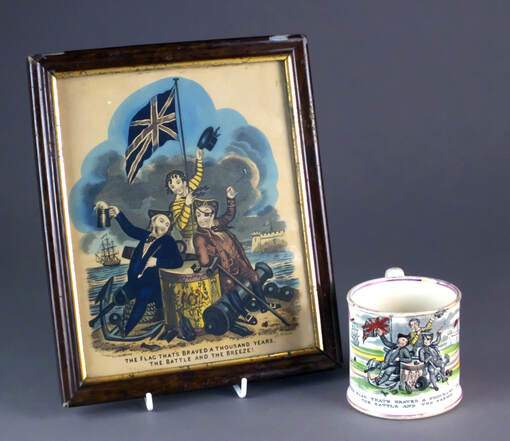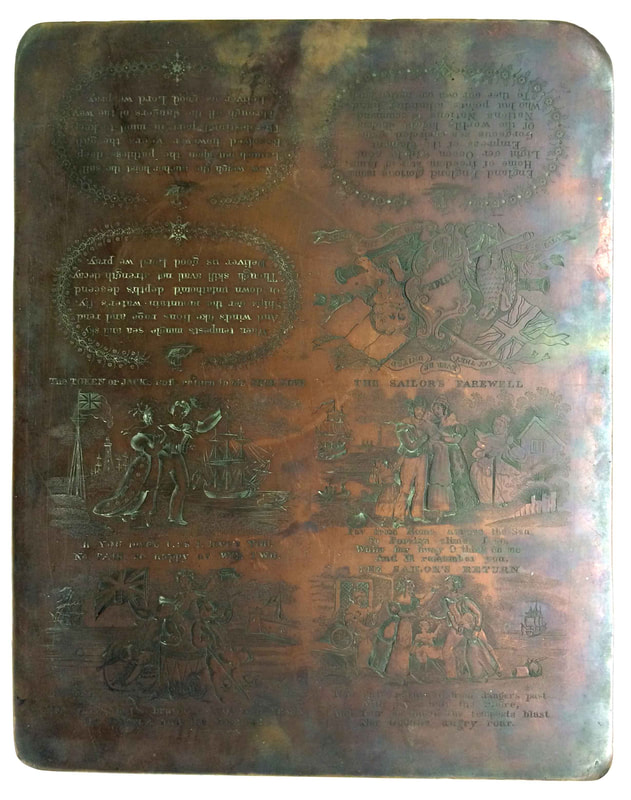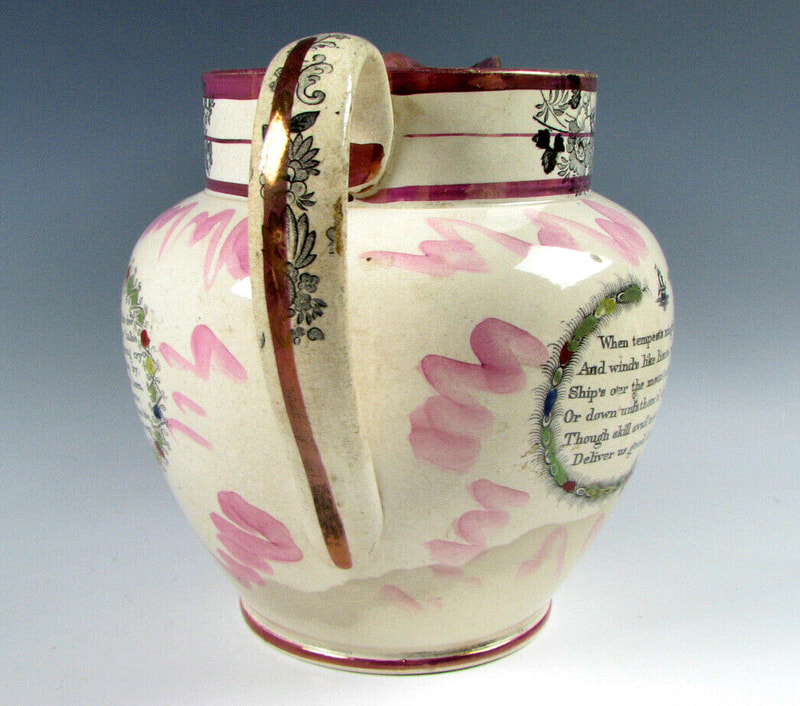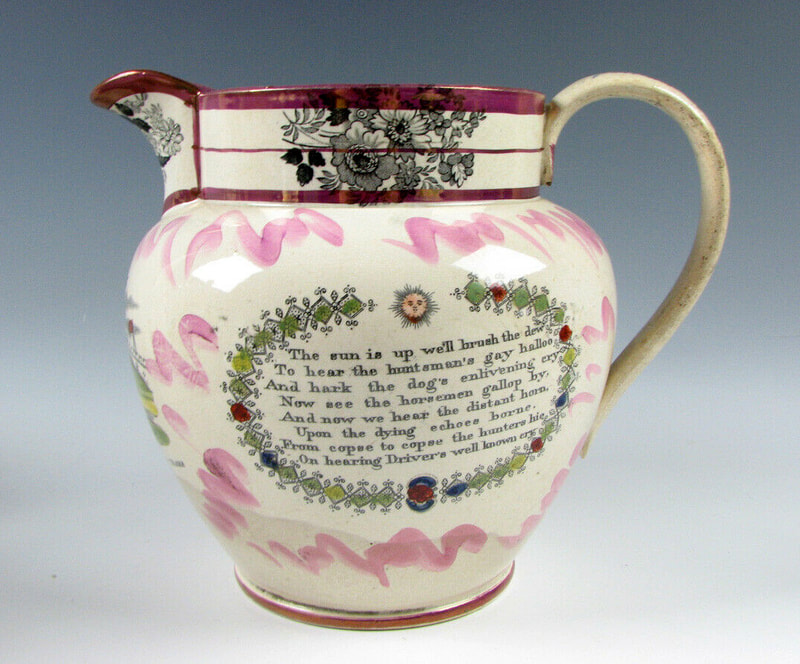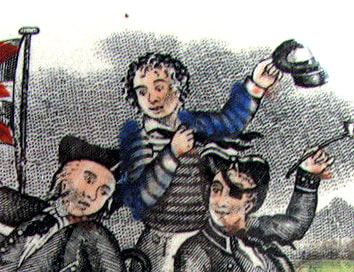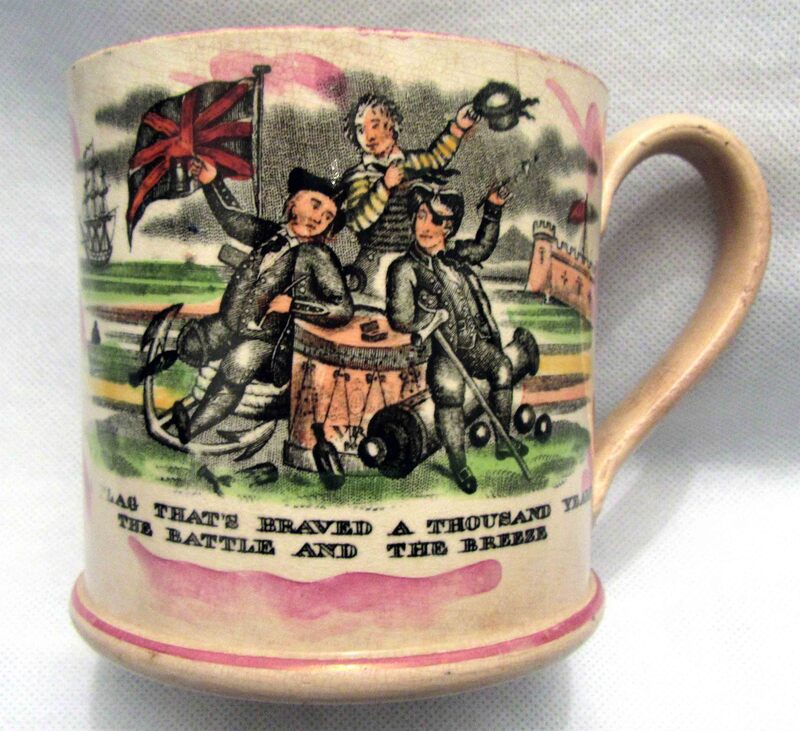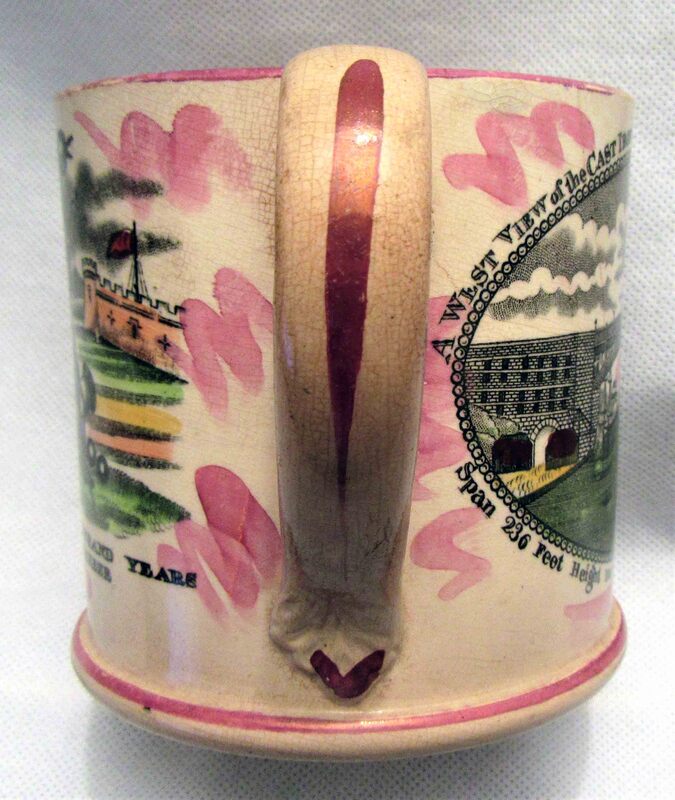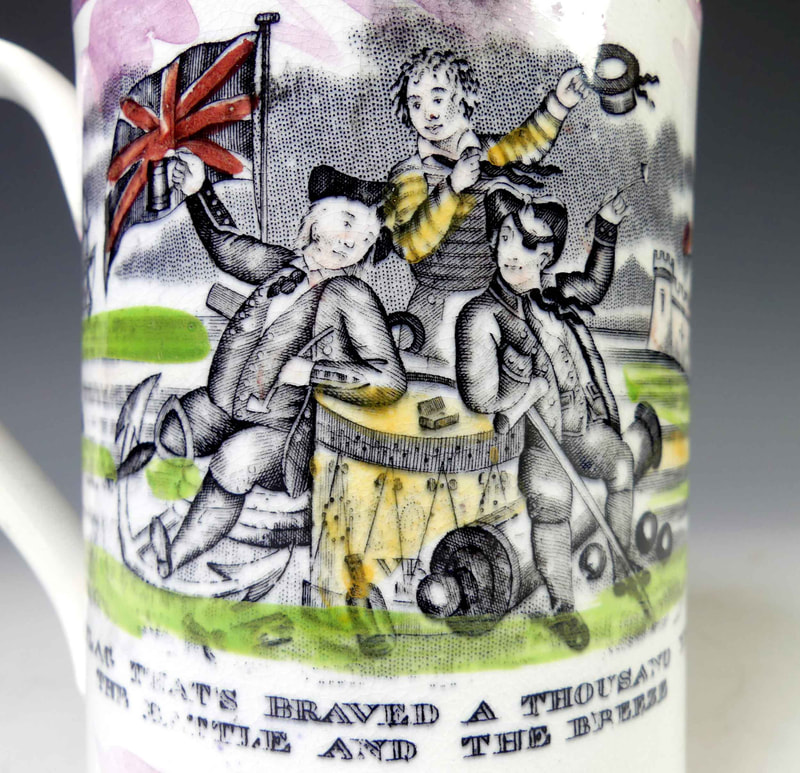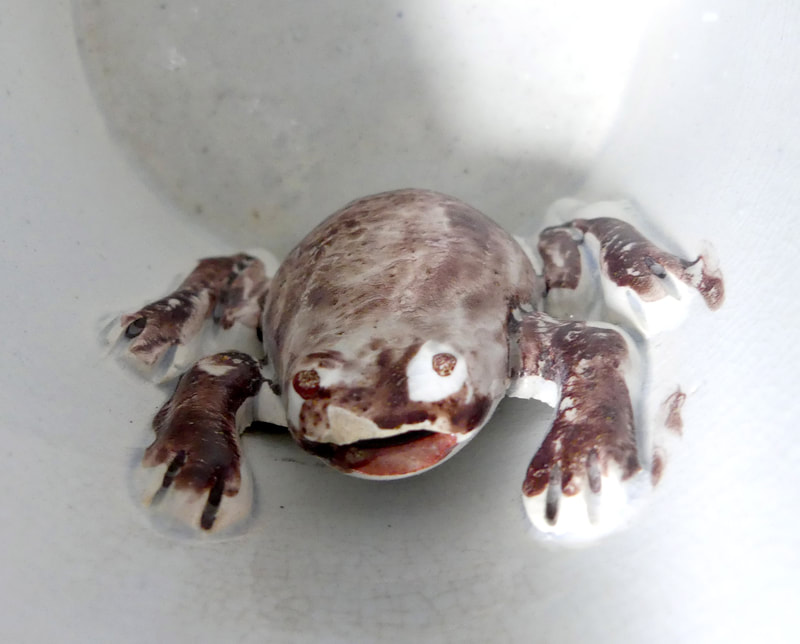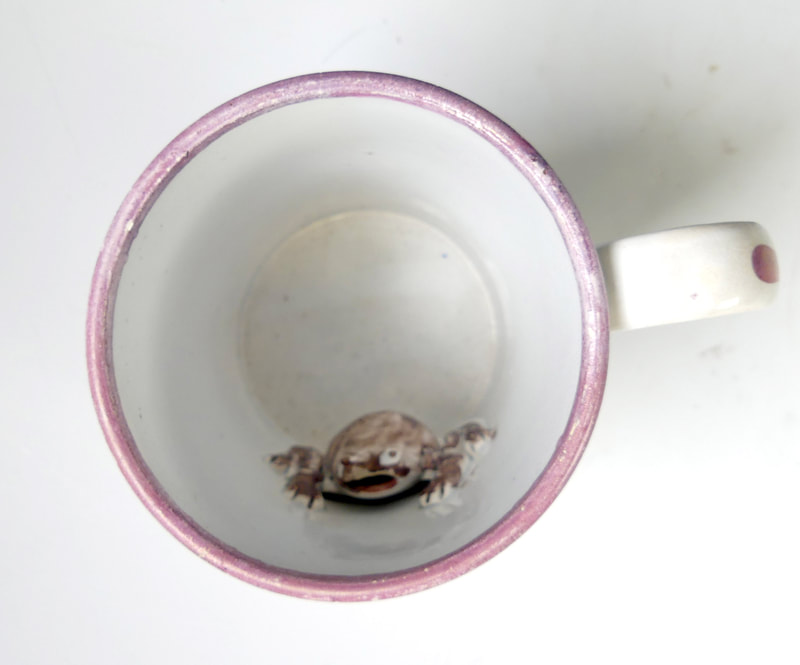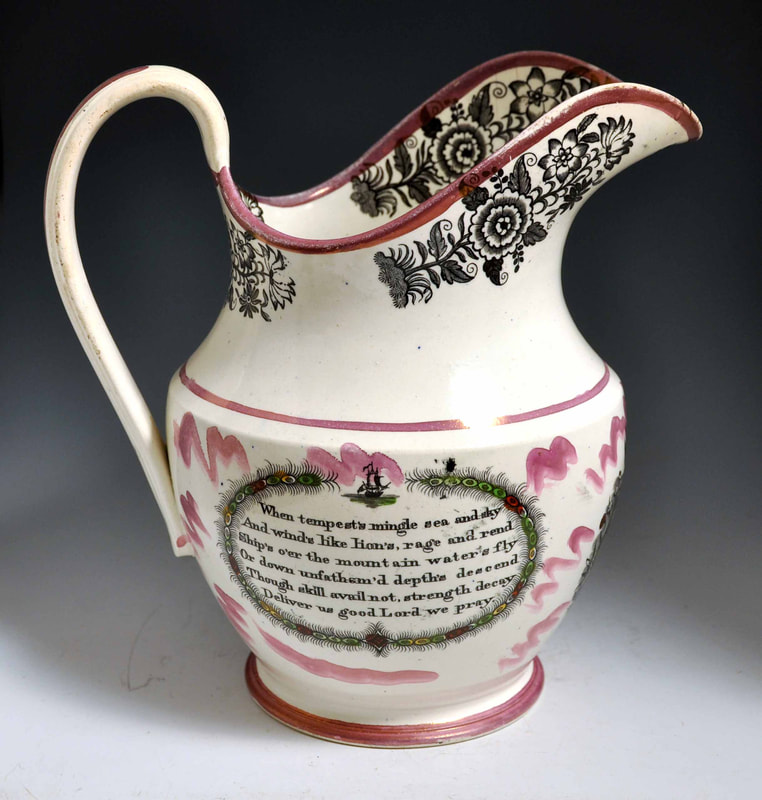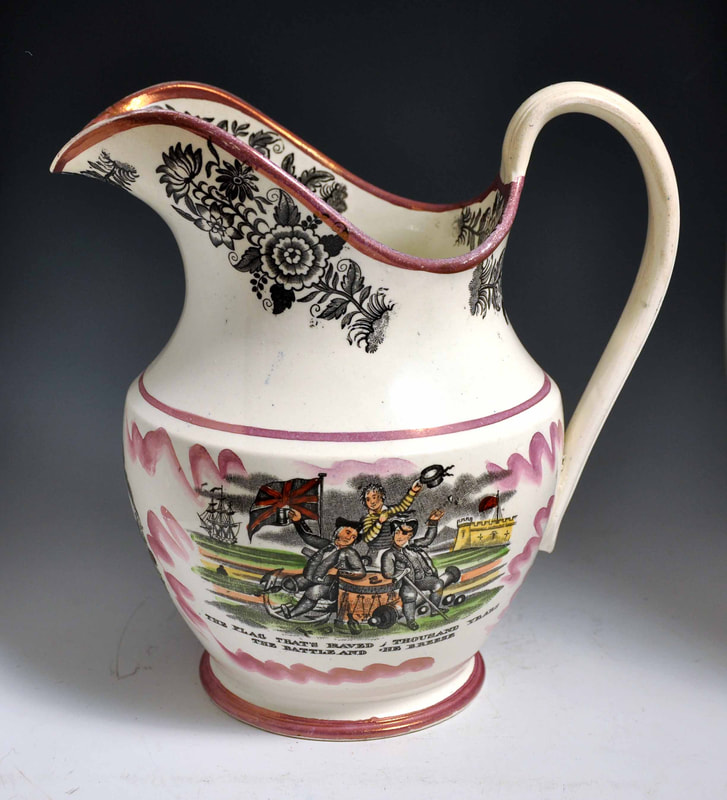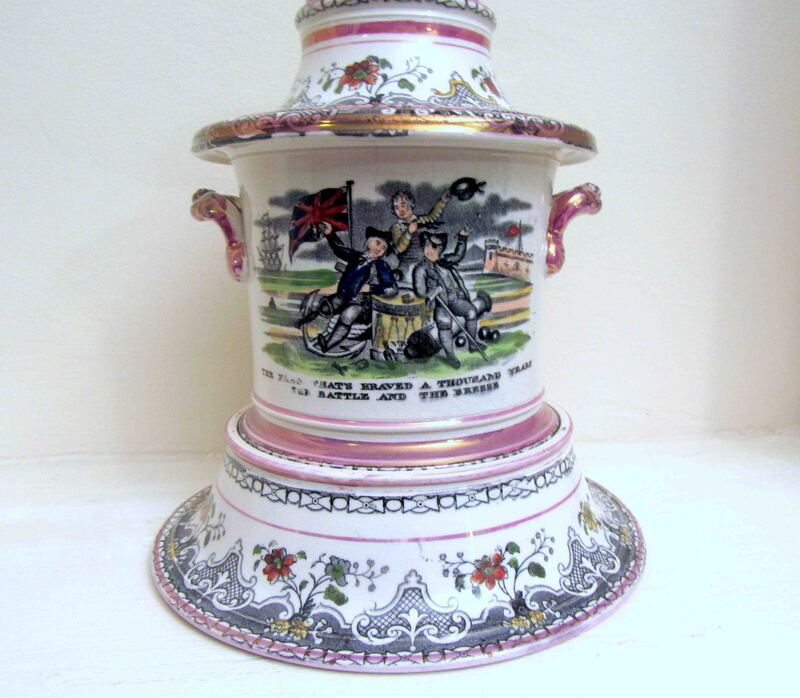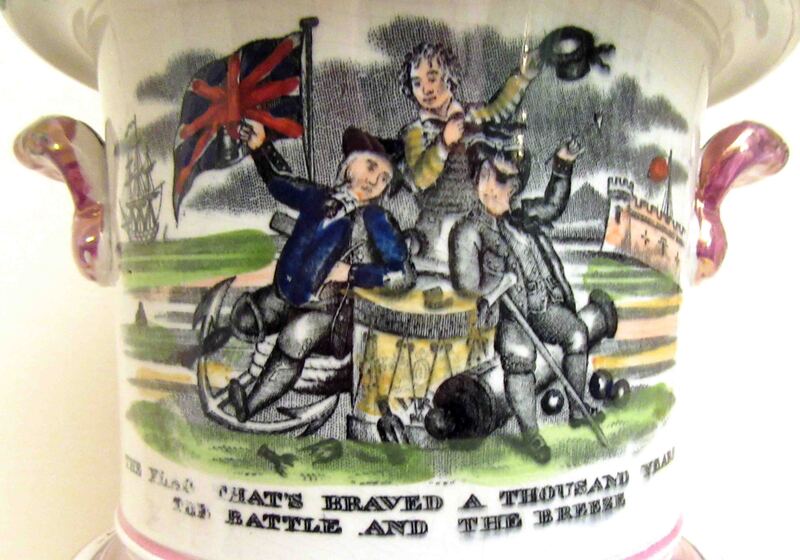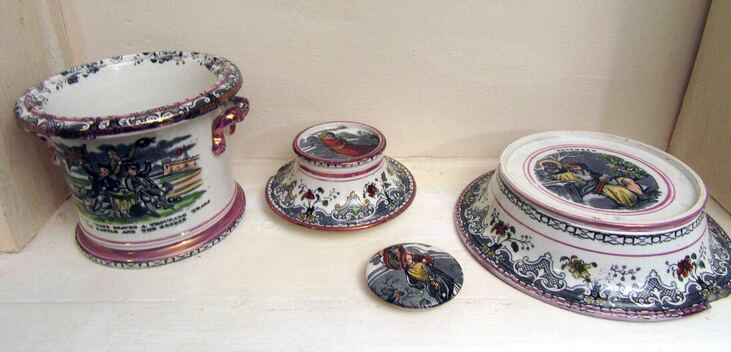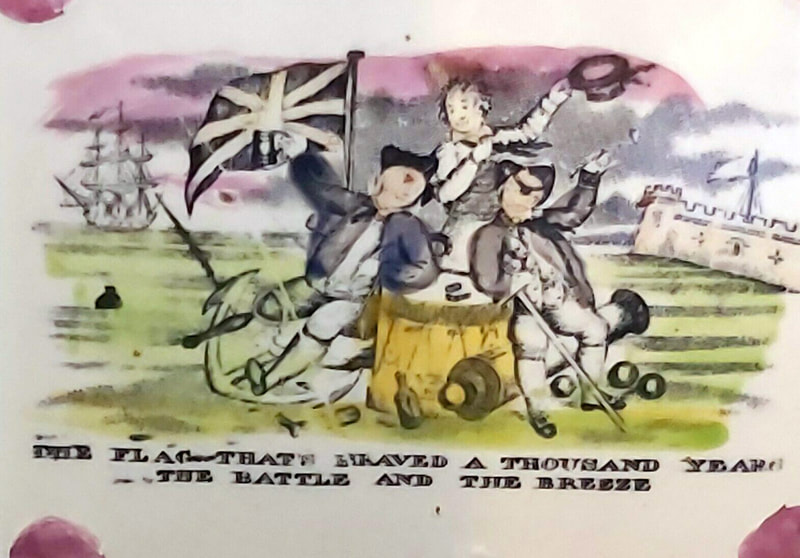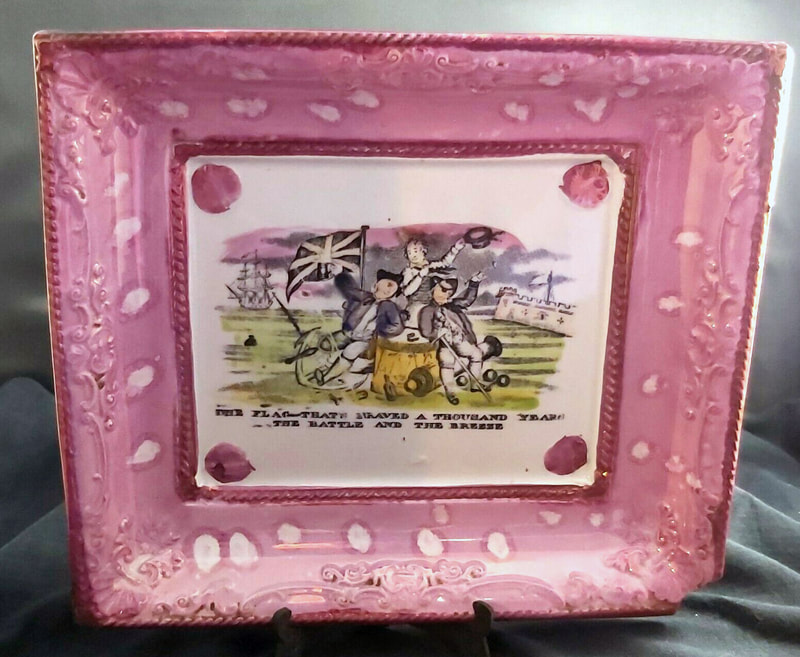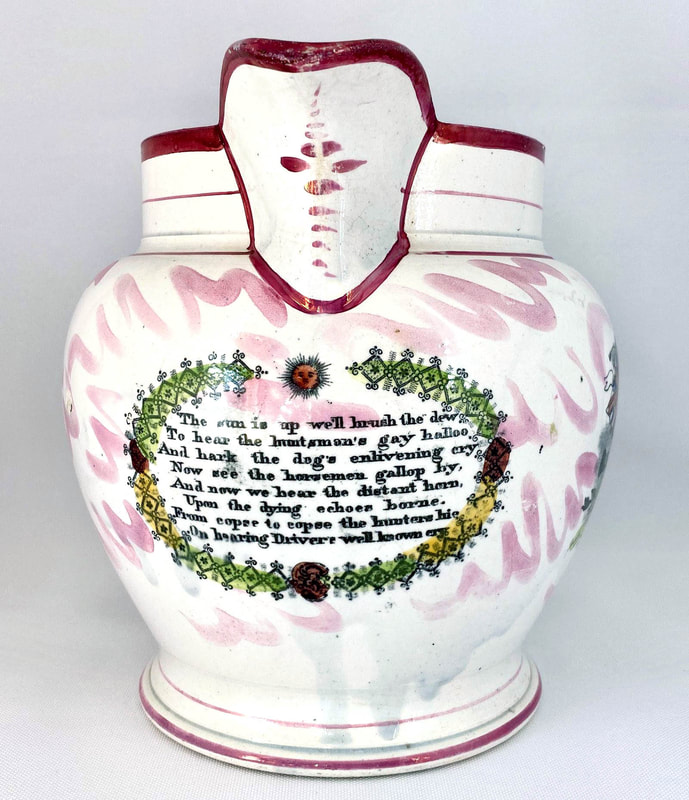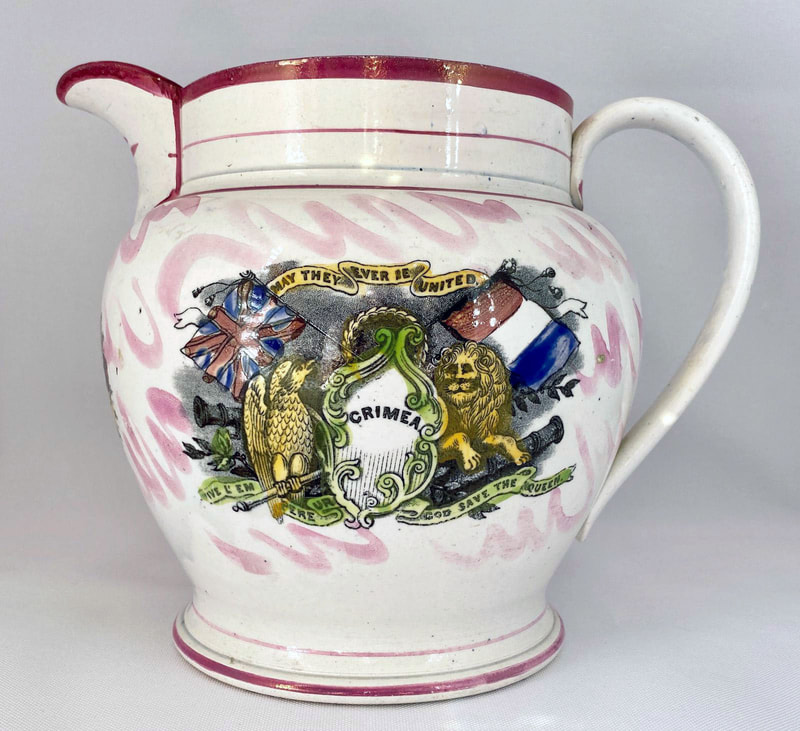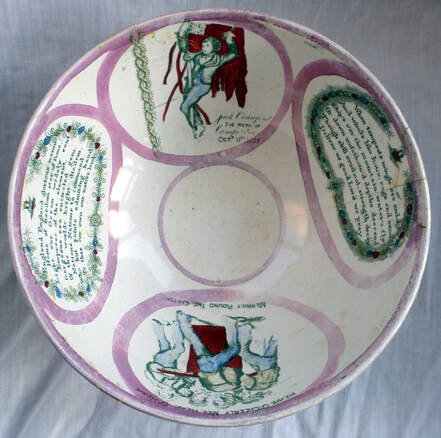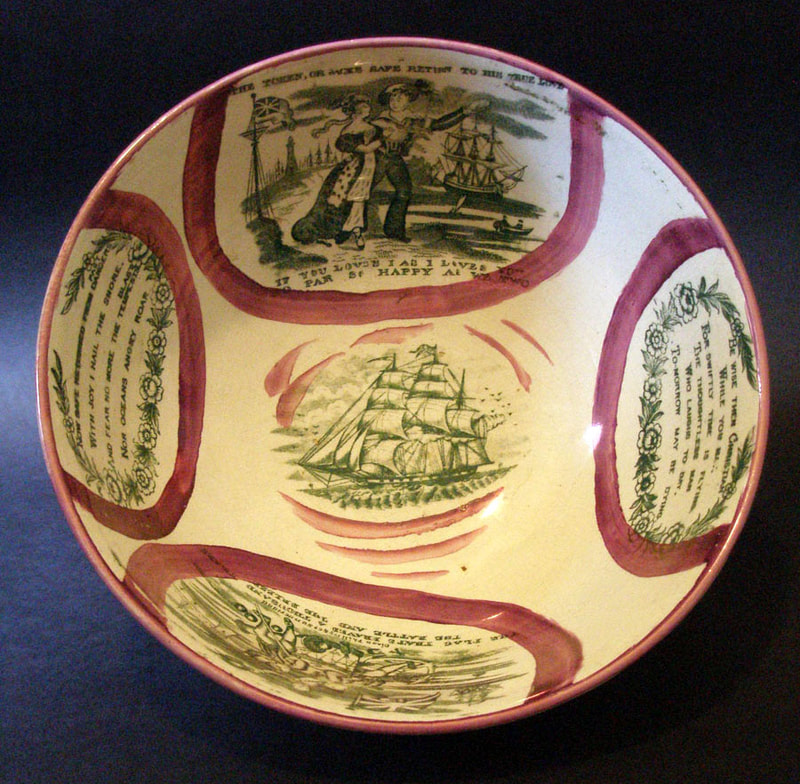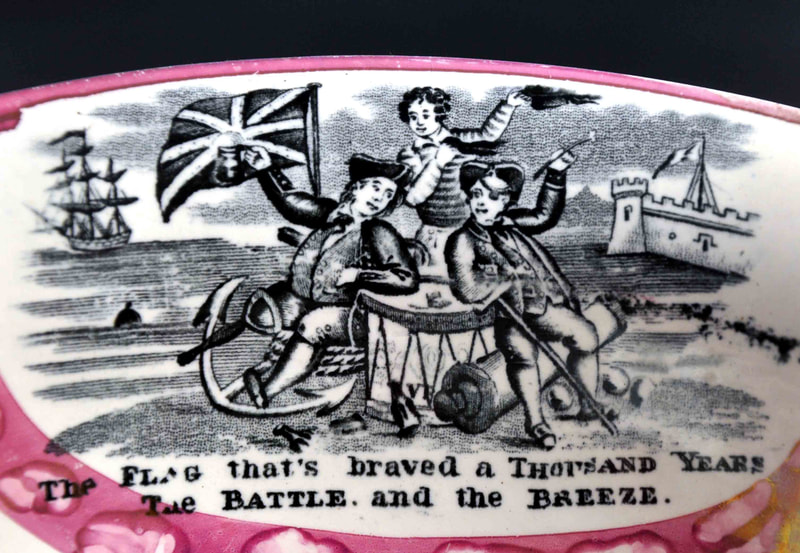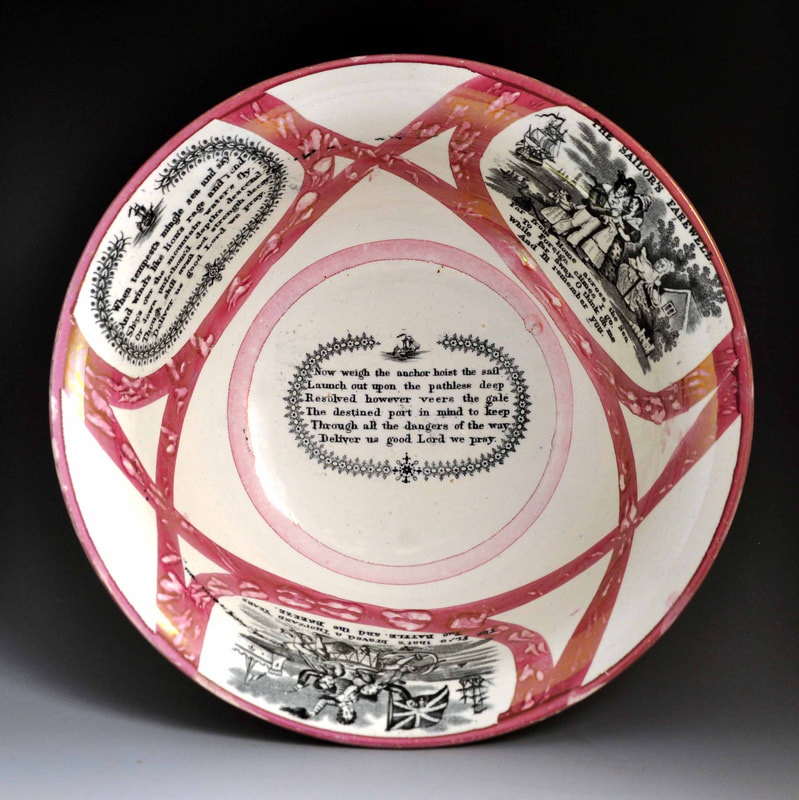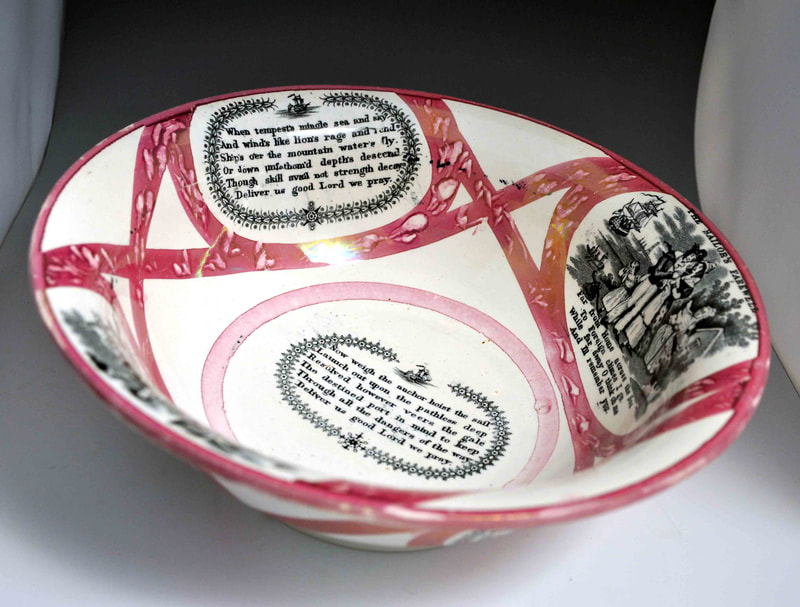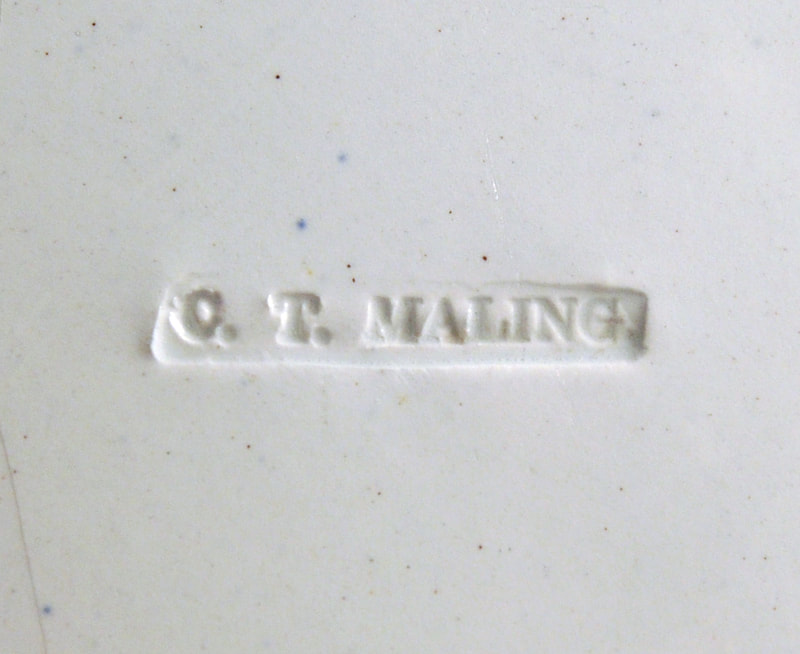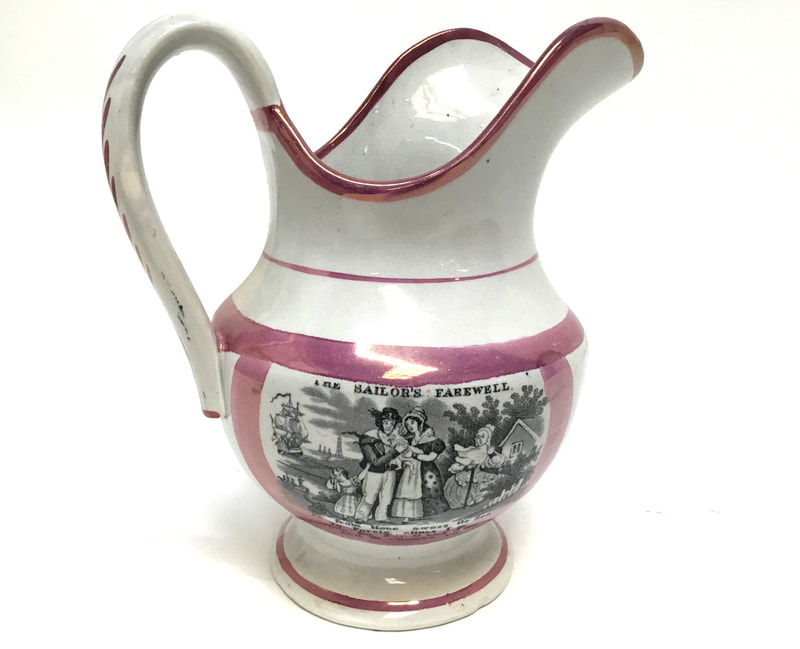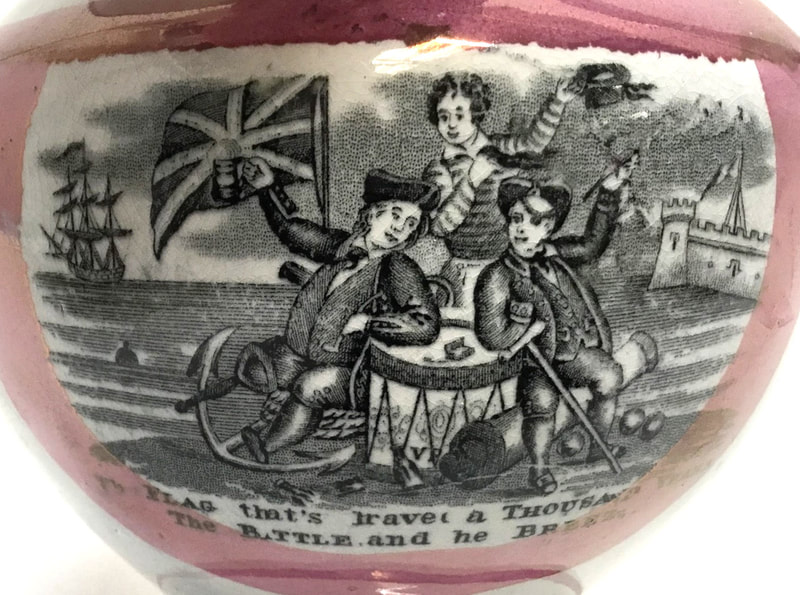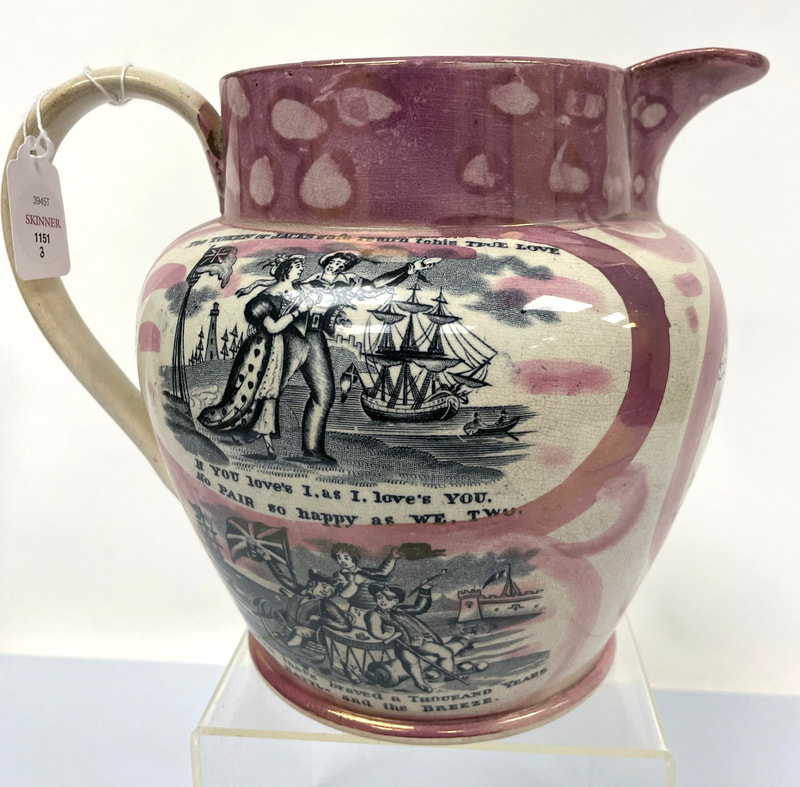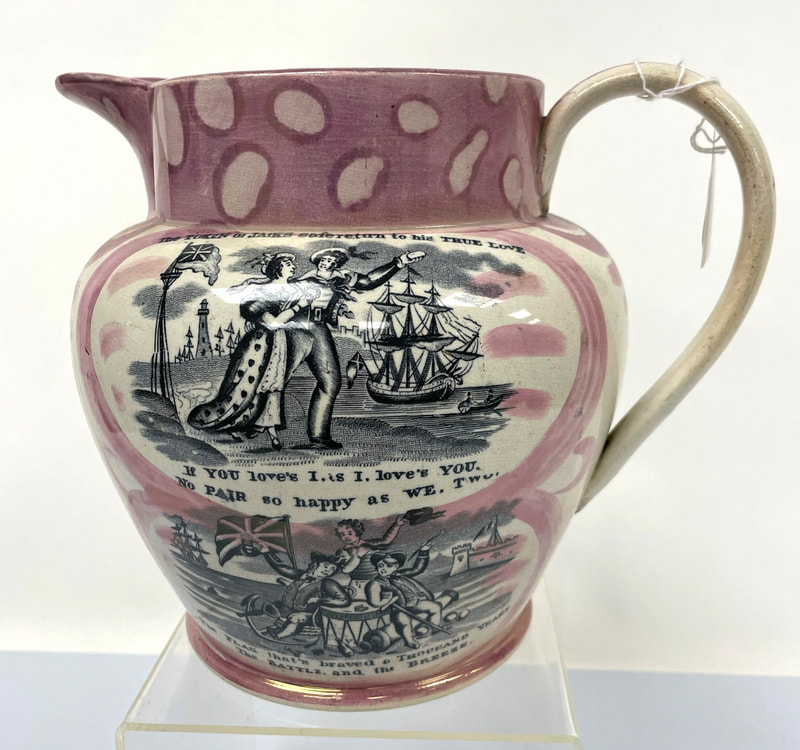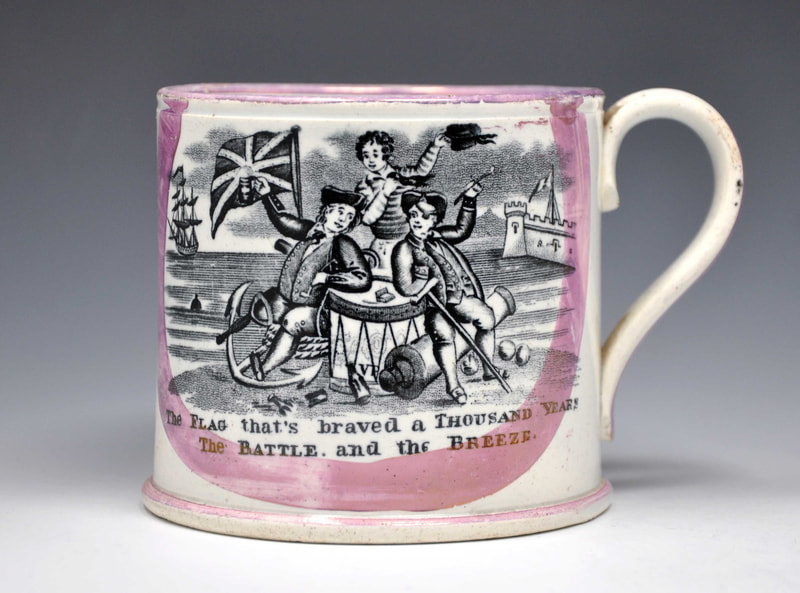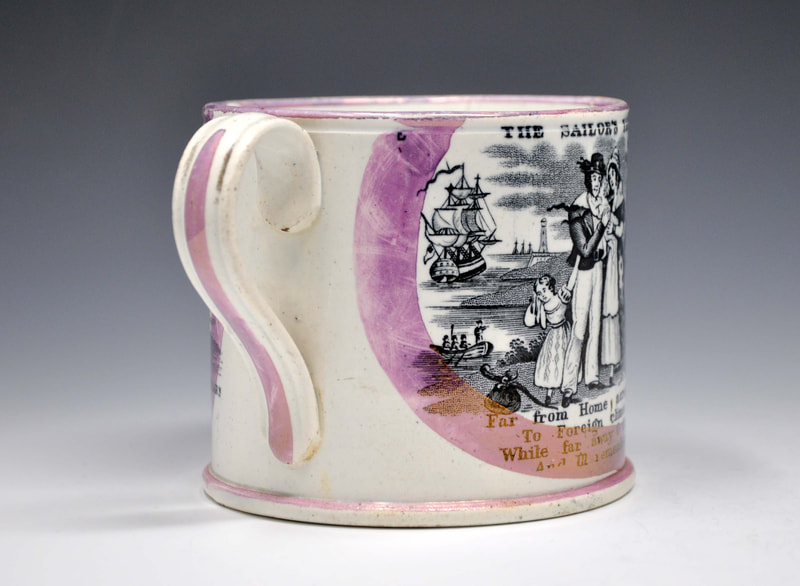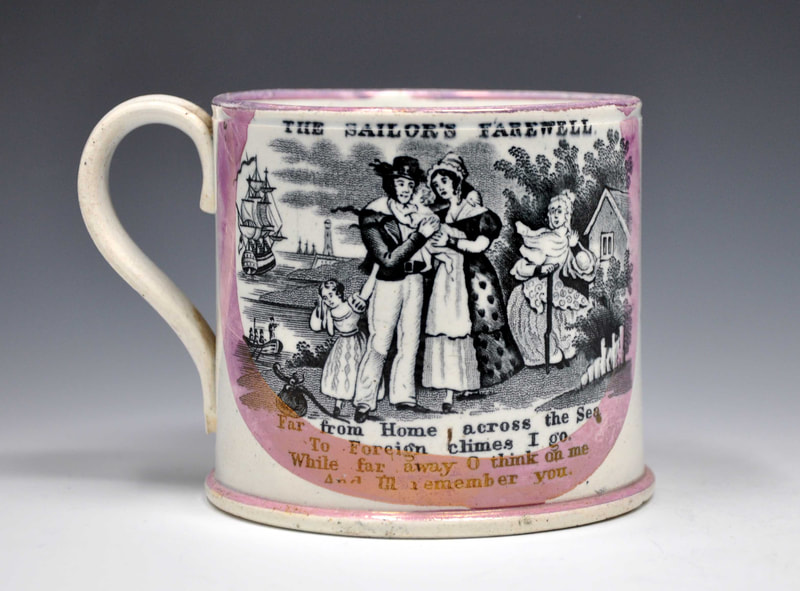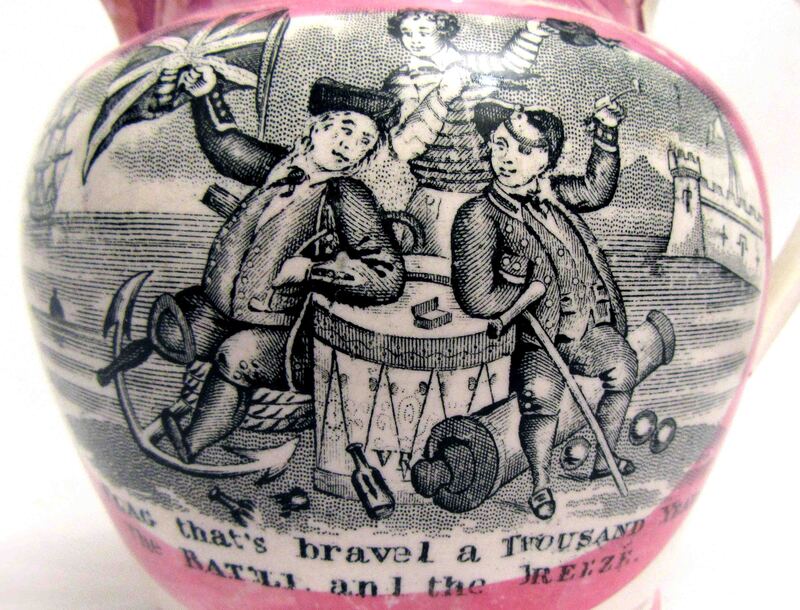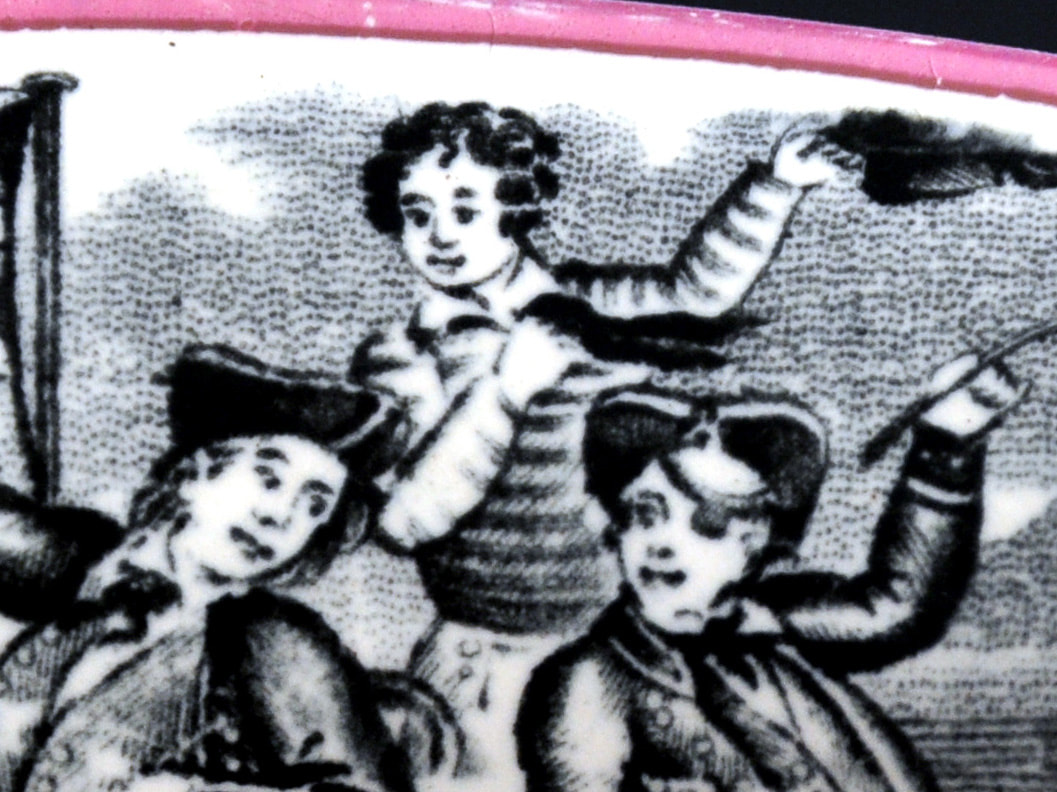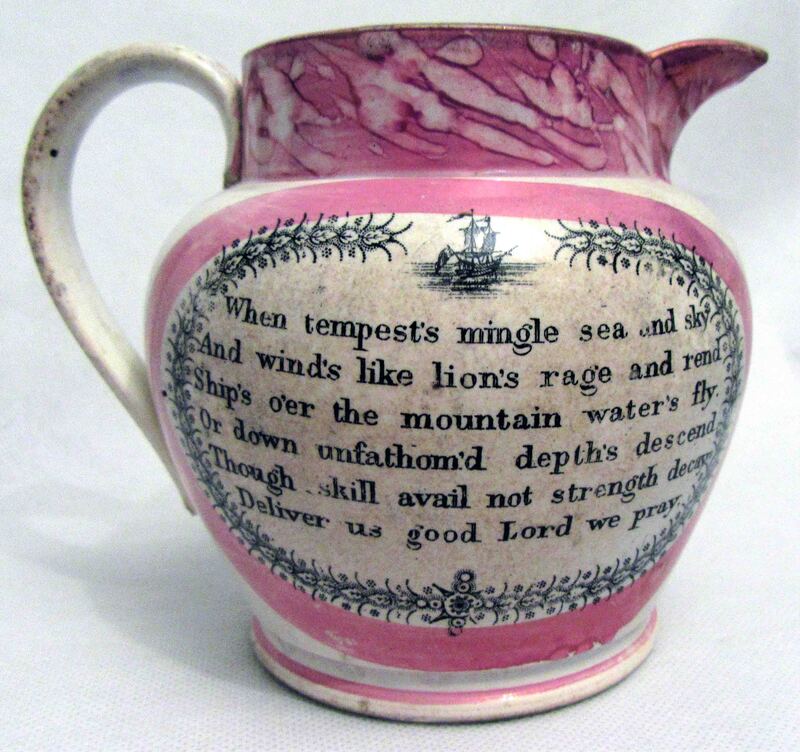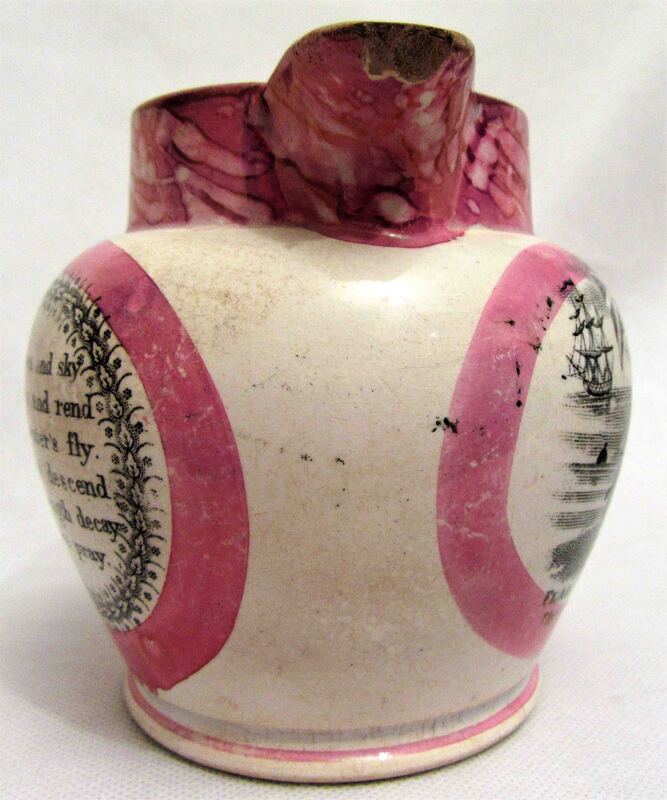The Flag That's Braved 1000 Years the Battle and the Breeze
|
The title comes from a line in a poem, Ye Mariners of England' by Thomas Campbell (1777–1844).
YE Mariners of England That guard our native seas! Whose flag has braved a thousand years The battle and the breeze! Your glorious standard launch again To match another foe; And sweep through the deep, While the stormy winds do blow! While the battle rages loud and long And the stormy winds do blow. The transfer appears on both Tyneside and Wearside pottery, and seems to have gained new relevance during the Crimean War, fought between October 1853 and February 1856. |
|
There are two copper plates still in existence with this transfer: one from Ball's Deptford Pottery, now in the Sunderland Museum & Winter Gardens' collection (left); and the other from CT Maling, now in the Laing Art Gallery, Newcastle upon Tyne (right). (Click on the images to enlarge.) However, there were at least six copper plates with these transfers made for use in the North East potteries. |
My guess is that Scott's Pottery commissioned the prototype for this set of transfers in the 1840s (more on that date below) and it looked very similar to the Ball copper plate above. The Scott plate likely became worn or damaged and was retired. Scott then had a replacement made. It seems that an engraver transfer printed the image onto another copper plate and engraved a new image with astonishing fidelity to the original. The Ball plate is a near perfect copy of the two Scott plates which are now lost.
Moore's copper plate is also now lost. The transfers differ significantly from Scott's original and are much closer to those on the CT Maling copper plate. However, there is no Moore version of the 'Flag' transfer, which appears to have been replaced with an engraving of 'Crimea'. We know, for instance, that Moore produced items with all four of the verses. The CT Maling plate has both the 'Flag' and 'Crimea' transfers, but only three verses. The Sailor's Farewell, Jack's Safe Return and Sailor's Return pages, show how the Moore and Maling transfers depart from Scott's original. The sixth copper plate was used by an as-yet-unidentified Tyneside pottery.
Interestingly, the Ball transfer plate has a spurious Dixon, Phillips & Co printed mark on two of the transfers. The mark appears to have been squeezed in at a later date. There are no known examples of Dixon (Garrison Pottery) wares with these transfers. All the examples I've seen were made by Ball's after 1865 when the Garrison Pottery closed. So it appears that Ball's gained some commercial advantage in passing their wares off as belonging to an earlier period.
Moore's copper plate is also now lost. The transfers differ significantly from Scott's original and are much closer to those on the CT Maling copper plate. However, there is no Moore version of the 'Flag' transfer, which appears to have been replaced with an engraving of 'Crimea'. We know, for instance, that Moore produced items with all four of the verses. The CT Maling plate has both the 'Flag' and 'Crimea' transfers, but only three verses. The Sailor's Farewell, Jack's Safe Return and Sailor's Return pages, show how the Moore and Maling transfers depart from Scott's original. The sixth copper plate was used by an as-yet-unidentified Tyneside pottery.
Interestingly, the Ball transfer plate has a spurious Dixon, Phillips & Co printed mark on two of the transfers. The mark appears to have been squeezed in at a later date. There are no known examples of Dixon (Garrison Pottery) wares with these transfers. All the examples I've seen were made by Ball's after 1865 when the Garrison Pottery closed. So it appears that Ball's gained some commercial advantage in passing their wares off as belonging to an earlier period.
Sunderland potteries
Scott's Southwick Pottery – plate 1
|
The reason for concluding that Scott's version of the transfer first emerged c1840 is that it appears on items with obliterated 'Scott & Sons' printed marks (see right). In 1841, the partnership changed from 'A Scott and Sons' to 'Scott Brothers and Co'. So presumably around that time, all references to the old partnership were erased from Scott's transfers. New versions of the transfers were then produced without the unsightly blacking out. So it is my guess that items with obliterated marks date from the early 1840s.
|
This jug has flower transfers around the collar that were in use from the late 1830s, and was, again, likely made c1840.
Scott's appear to have produced at least two variations of the transfer (see below). On the left is the 1840s' version on the items above. On the right is a second version, found on items from the Crimean period, c1855, see the bowls below.
Scott's Southwick Pottery – plate 2
Below, the other transfers on the bowl, and a similar mug. It is hard to pinpoint a date for these items as this version of the transfer appears to have been in use from the mid 1850s into the 1860s. The items below have transfers of the old Sunderland Bridge – the new one opened in 1859. However, transfers of the old bridge were still in circulation after that date. Some items have transfers of both the old and new bridges.
A typical Scott's frog mug with the 'Crimea' transfer, so post 1855.
A bowl with the 'Crimea' transfer and typical Scott flower decoration around the rim.
A wash ewer with the transfer and one of Scott's months, October, under the wide lipped spout.
A fabulous Scott 'supper set' or 'bachelor set with tobacco jar and bowl / spittoon. Originally there would have likely been a candlestick on top.
A distinctive plaque form used by Scott's, also c1855.
Finally, two jugs with lustre decoration typical of Scott's in the 1850s. I suspect that, like the old bridge transfer, the Crimea transfer was used into the 1860s.
Ball's Deptford Pottery
The copper plate for this version of the transfer was donated by the Ball family to the collection of Sunderland Museum & Winter Gardens, Tyne & Wear Archives & Museums. At a later date, someone has added the fake printed inscription 'Dixon, Phillips & Co, Sunderland'. My guess is that this was done sometime after the Garrison Pottery closed in 1865 and with the intention to deceive. The transfer below is on the side of a bowl with an image of 'Jack Crawford The Hero of Camperdown'.
Below, another Ball's-attributed bowl with the transfer, c1900.
Tyneside potteries
C T Maling, Newcastle
Below, a similar marked bowl with the Crimea transfer, and a wash ewer and large jug, typically unmarked.
Two further unmarked bowls with the transfer and different pink lustre decoration. Both have the Crimea transfer, which I suspect continued to be used into the 1860s.
A typical mug with the transfer.
The pedestal bowl below, with the CT Maling transfer, is likely later than the items above. These bowls tend to have slightly degraded transfers and are heavily potted.
Unidentified Tyneside pottery
This version of the transfer is more finely engraved than the CT Maling version (shown right below).Note the shading on the boy's face. Also, in the Maling version, the boy has an additional button on his trousers.
20th century Maling reproduction
The loving cup below, was made in the mid 20th century, but could be mistaken for an original. The transfers appear to come from the CT Maling copper plate. However, the moulded handles and the way the pink lustre is applied, give it away as a reproduction.
